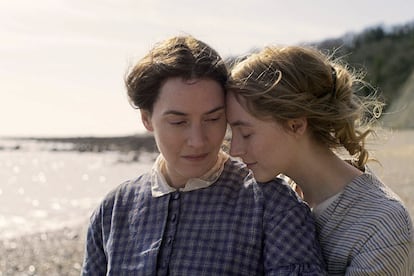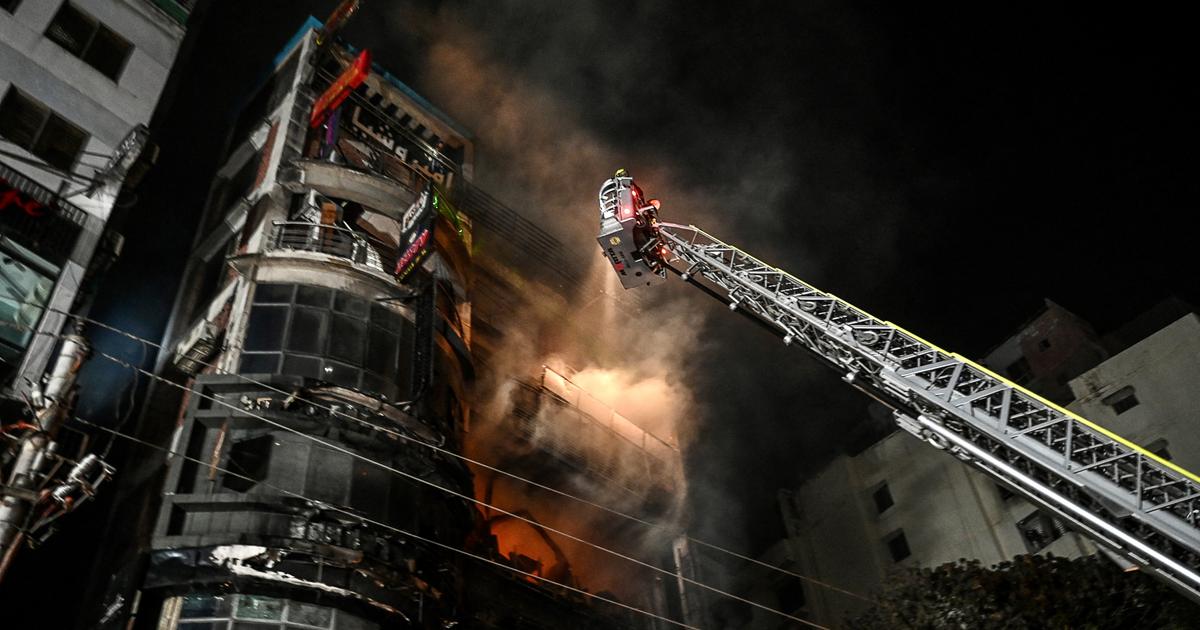There are beginning to be so many that, after the euphoria that caused its appearance, it is difficult not to mistrust the reasons that explain its abundance.
For five years, a subgenre as unexpected as the period lesbian drama has invaded our screens.
Two films have just been added to the list:
The World to Come
, a
western about the secret love between two 19th century farmers, which premiered on
streaming
yesterday
,
and
Ammonite
,
the forbidden romance between a paleontologist and a lady of high society in 1840 England, available on VOD for a few weeks. Regardless of their historical setting and the homosexuality of their protagonists, the two have in common that they are not niche products. The first is driven by Sony, which after presenting it at the Venice Film Festival tried to turn it (unsuccessfully) into an Oscar-winning vehicle. The second, starring two stars like Kate Winslet and Saoirse Ronan, does not have a minority vocation either.
Both come after a series of similar titles that, in some cases, brought together good reviews, cultural relevance and an acceptable collection, among which were
Portrait of a Woman on Fire
, by Céline Sciamma;
The favorite
, by Yorgos Lanthimos; the
biopic
of the French writer
Colette
, with Keira Knightley; the
Gentleman Jack
series
, inspired by the life of Anne Lister, a British landowner considered today "the first modern lesbian", or even
Elisa and Marcela
, by Isabel Coixet, from which Netflix, smelling the interest that appeared in these types of stories, bought the world rights. But the first of all was
Carol
, Todd Haynes' adaptation of the book
The Price of Salt
, by Patricia Highsmith, which became a cult object, multiplied its budget by four at the box office and achieved six Oscar nominations (Harvey Weinstein is the only one behind it). awkward part of the story). The lesbian thing no longer frightened the general public. Now it didn't even bother him anymore.
Hollywood-leaning cinema is always a summation of known quantities, of past successes that
marketing
departments
harmonize in slightly different ways, which may explain this overabundance of Sapphic stories set in the distant past. The opportunism of the operation is evident at a time when the
mainstream
space
- at least that of the English-speaking world - can no longer afford to be left out of the
Woke
culture
.
and identity politics. As is often the case in American culture, the laws of the market open up new spaces for representation, which has undeniable political effects. Still, using the same recipe ad nauseam can etch counterproductive stereotypes in marble. This string of films confirms an inertia to relate the lesbian with the tragic, an insistent preference for historical periods where homoerotic was a major social taboo - above others in which it was accepted with greater tolerance, from the English Renaissance to the Berlin of the 1920s - and a tenacious allergy to exploring its attributes in the contemporary world and not just in a remote time.
Despite the differences, their dramaturgy is similar in almost all cases. Two opposing women experience an unexpected connection that they cannot avoid no matter how hard they try, in a modern and extemporaneous vision of the loving feeling that manages to overcome obstacles as strong as social determinism. One of the two always suffers a misfortune: Carol loses custody of her daughter; Héloïse, the protagonist of
Portrait of a Woman on Fire
, must marry a stranger after the suicide of her sister; Charlotte, in
Ammonite
, has a miscarriage, and Abigail, in
The World to Come
, loses her daughter to diphtheria. The
Saturday Night Live program
aired in April a
sketch
that went viral,
Lesbian Period Drama
(period lesbian drama), fake movie trailer that laughed at all those tropes: "long walks along cliffs", "12 lines of dialogue in more than two hours of footage", "an unbearable tension that ends With such a graphic sex scene you'll say, 'Okay, a man directed this.'
Kate Winslet and Saoirse Ronan, in 'Ammonite' AMMONITE
The mockery seems to be directed at Abdellatif Kechiche and
La vida de Adèle
,
with that torrid sequence shot that so many criticisms raised about the notion of
male gaze
,
theorized by film historian Laura Mulvey. Despite everything, these next-generation films also raise another crucial question in contemporary culture: that of legitimacy. Is the gaze of Mona Fastvold, the heterosexual director of
The World to Come,
more relevant when she makes her protagonists deliver topical dialogue? Is it that of a homosexual director like Francis Lee, who in
Ammonite
dare to formulate the visual metaphor of a chrysalis suffocating under a glass? Are lesbian directors like Lisa Cholodenko
(The Boys Are Fine)
or Clea DuVall
(The Station of Happiness)
when they propose almost platonic fictions about female homosexuality? Will it be Paul Verhoeven in
Benedetta,
about a mystical and lesbian nun in the Italy of the Counter-Reformation, which he will present at the Cannes Film Festival? Were your
90s
lesbian
thrillers
, a reviled subgenre now resurrected by
I Care a Lot,
or, according to certain readings,
A Promising Young Woman
?
Without daring to formulate
tricky
happy ends
- love never won in those times, nor in ours -
The World to Come
and
Ammonite
bet on outcomes that are reminiscent of
Portrait of a Woman on Fire
. In it, Céline Sciamma hinted that the love she described, impossible in terms of historical materialism, had consequences in the subjectivity of its protagonists, capable of using their imaginations to keep alive a socially inadmissible bond. These two new films extend that idea, either by making her sleep in separate beds or even by building bridges with the other neighborhood. The most interesting could be in those endings.
'The World to Come'.
Mona Fastvold.
Available on Movistar, Google Play and Apple TV.
'Ammonite'.
Francis Lee.
Available on Movistar, Rakuten TV, Google Play and Apple TV.
You can follow BABELIA on
and
, or sign up here to receive
our weekly newsletter
.




/cloudfront-eu-central-1.images.arcpublishing.com/prisa/QWGVKQFT5VE77F4VMAREJY5XTI.jpg)




